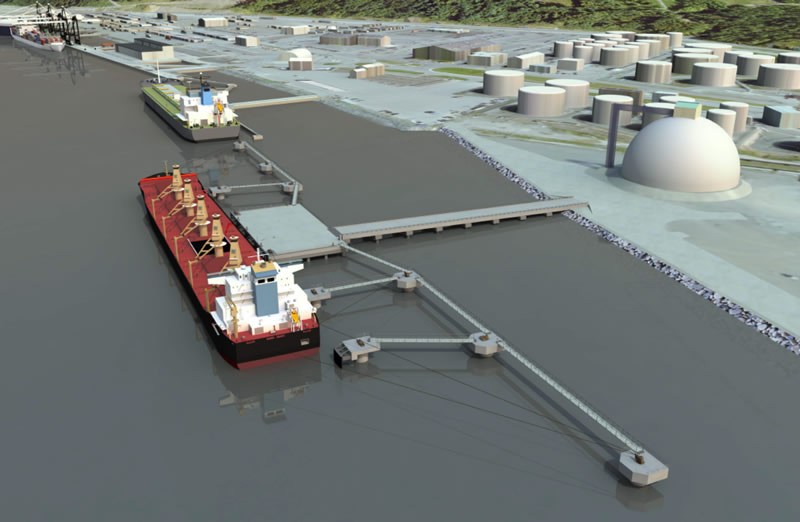ANCHORAGE, AK— The U.S. Department of Transportation Maritime Administration (MARAD) announced today that it awarded a $20 million infrastructure development grant to help replace aging Port of Alaska docks.
MARAD’s Port Infrastructure Development Program (PIDP) offered $292.7 million in nationwide grant opportunities in 2019 to pay up to 80 percent of project costs for U.S. coastal seaport improvements. Port of Alaska applied for PIDP funding to help offset construction costs of its new petroleum and cement terminal (PCT) that starts in-water construction this spring.
Municipality of Anchorage officials worked closely with federal officials, including Alaska congressional delegation members, to pursue this PIDP grant and other state and federal funds to build the PCT.
“This is great news,” said Anchorage Mayor Ethan Berkowitz. “When Alaskans work together, Alaska wins. This grant is an example of the Municipality, the Port of Alaska, and our Congressional delegation working hard so we can pound pilings and secure a critical piece of infrastructure.”
This $20 million PIDP grant combined with the $25 million Better Utilizing Investment to Leverage Development (BUILD) grant that that the U.S. Department of Transportation awarded the port last November will offset a significant portion of the more than $200 million projected PCT costs. The State of Alaska also awarded $20 million in 2019 to help construct the PCT. Port of Alaska instituted new fuel and cement tariffs on Jan. 1, 2020 that will be used to pay remaining PCT construction costs.
Port of Alaska in Anchorage handles about half of all Alaska inbound fuel and freight, half of which is delivered to final destinations outside of Anchorage. PCT construction is the first phase of Port of Alaska’s modernization program that aims to replace aging docks and related infrastructure before they fail due to a combination of corrosion, upper Cook Inlet’s harsh marine environment and seismic stress.
The magnitude 7.1 earthquake in November 2018 caused considerable damage to the port’s two petroleum terminals (that also handle most of the cement used statewide). Both docks were reinforced in 2019 but full repair is impossible and they remain at severe risk of seismic failure. The PCT is designed and being constructed to survive an earthquake more powerful than Southcentral Alaska’s 1964 Good Friday earthquake. In-water construction starts on the PCT’s trestle and deck this spring. Muni officials expect to issue a request for proposals later this month to contract to finish PCT construction in 2021.
Muni officials are currently working with port and transportation stakeholders to refine new general cargo terminal plans. Port of Alaska’s general cargo terminals suffer the same age, corrosion and seismic issues as the fuel docks and must be replaced before they fail due to a loss of load-bearing capacity, which could occur within the next eight years, or sooner if there is another large earthquake.
###
Jim Jager, External Affairs Director, Port of Alaska
(907) 538-3277, jim.jager@anchorageak.gov


